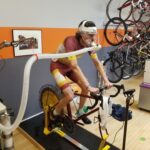For those of you who follow my education-related posts (here is a primer), you know I’m no fan of testing in public schools as it is currently conceived and used. In my view, the cart is firmly before the horse, where the horse of quality education is being pulled by the cart of testing rather than the more appropriate other way around. My concerns are myriad:
- It causes schools to “teach to the test,” meaning teachers devote most of their time to preparing students to pass tests rather than educating them;
- Teaching to the test causes a narrowing of the curriculum that neglects other essential subjects beyond those of reading and math that are the focus of testing;
- The current tests don’t measure important criteria such as motivation, life skills, critical or abstract thinking, creativity, and decision making;
- Using test scores to evaluate teachers ignores the at-best uncertain results of the “value added” benefits of teachers to student learning (though the idea does have potential);
- Teachers, schools, and states are motivated to game the system (e.g., lower standards, cherry picking data, cheating) to ensure federal funding;
- Testing sucks the joy out of both teaching and learning;
- Ultimately, test scores have become the end-all, be-all of public education reform rather than just a tool to assess the quality of public education.
But what would happen if schools were to “test to the teach?” In other words, use testing as a means of assessing how well students are learning the curriculum that is being taught to them by their teachers (rather than the curriculum being comprised of what is needed to pass the tests). In fact, as Susan Engel, a noted education researcher, suggests, tests could be developed to measure most everything that students learn, both in terms of subjects (e.g., history, science, and vocabulary) and life skills (e.g., abstract thinking and problem solving). And, the results of these tests could be far more useful tools for improving the quality of education and closing the achievement gap than the current misguided use of testing.
Educators agree that testing has value when it serves a positive function in improving children’s educational experiences:
- Tests must reflect and assess the current school curriculum, not the other way around;
- Tests need to measure a wide range of knowledge and skill sets that are necessary for children be prepared for future education, career, and responsible citizenry;
- Tests should be used to assess individual students’ progress and offer information to teachers on ways they can improve;
- Tests must be used as a measure of the more appropriate and important outcome goal of better educated students.
What’s preventing the U.S. from using testing to actually advance our public education goals? How about expediency, in a culture that looks for quick fixes and the path of least resistance. Or, short-sightedness, where the politicians who legislate public education reform are more interested in political theater and campaign contributions than substantial solutions. Or, a disconnect between what researchers and teachers have demonstrated to work and what politicians and school bureaucrats want to believe will work. Or, vested interests, such as said politicians and school bureaucrats, teachers’ unions, testing companies, and textbook publishers, who profit most from maintaining the status quo. All of these forces create an inertia (think trying to change the trajectory of an asteroid hurtling through space) that is all but impossible to change.
The sad thing is that those who suffer the most, namely, our children, have no say in the matter at all and those who advocate for them have no power to have a say.


